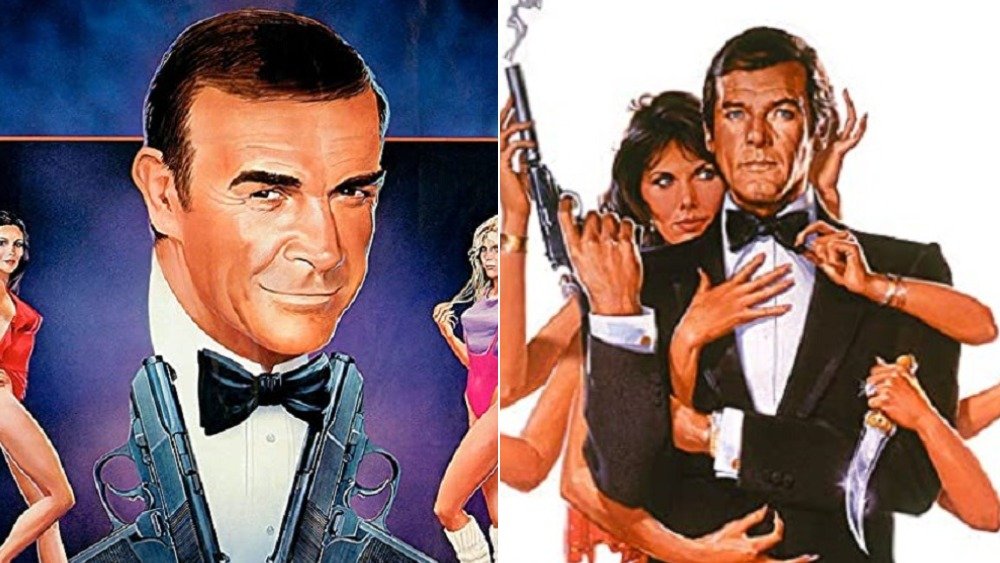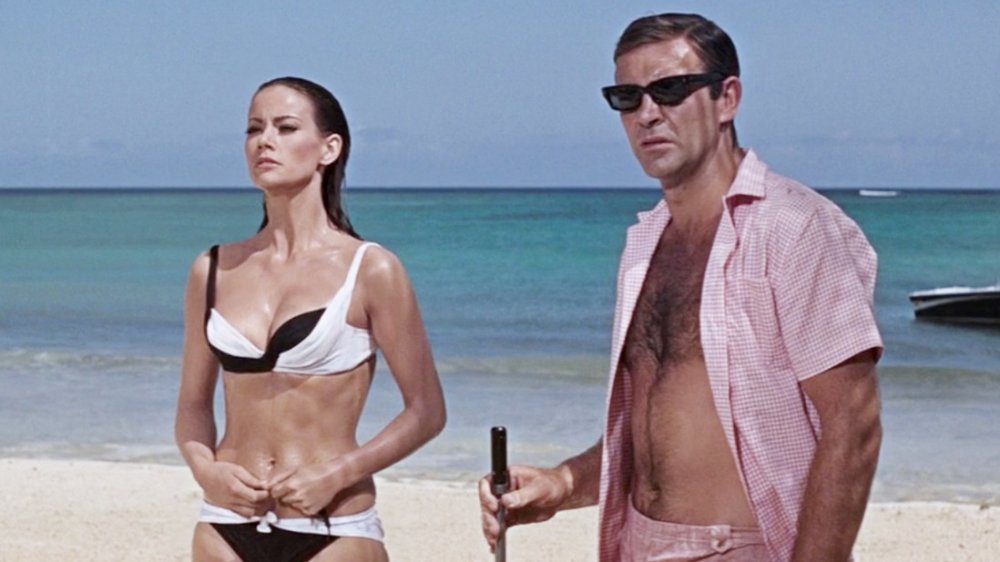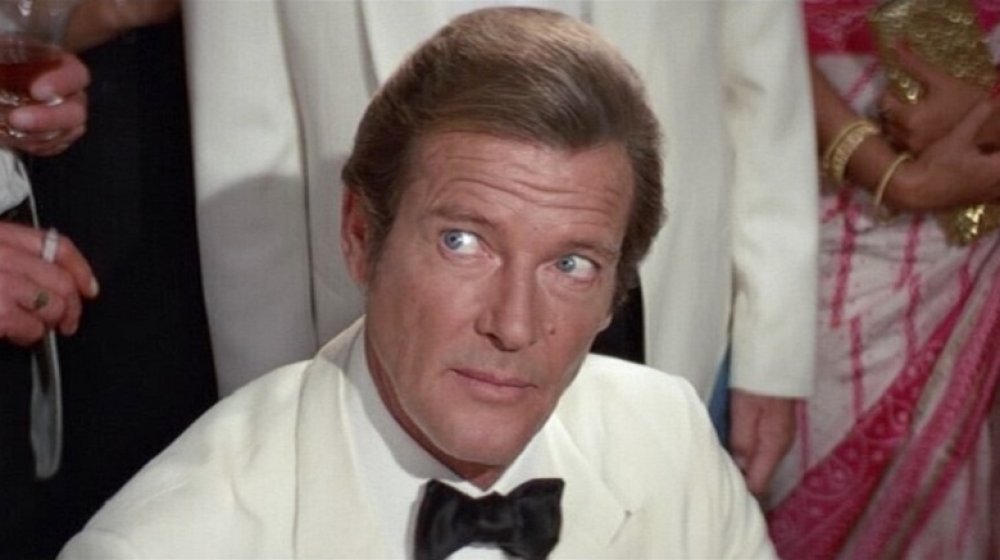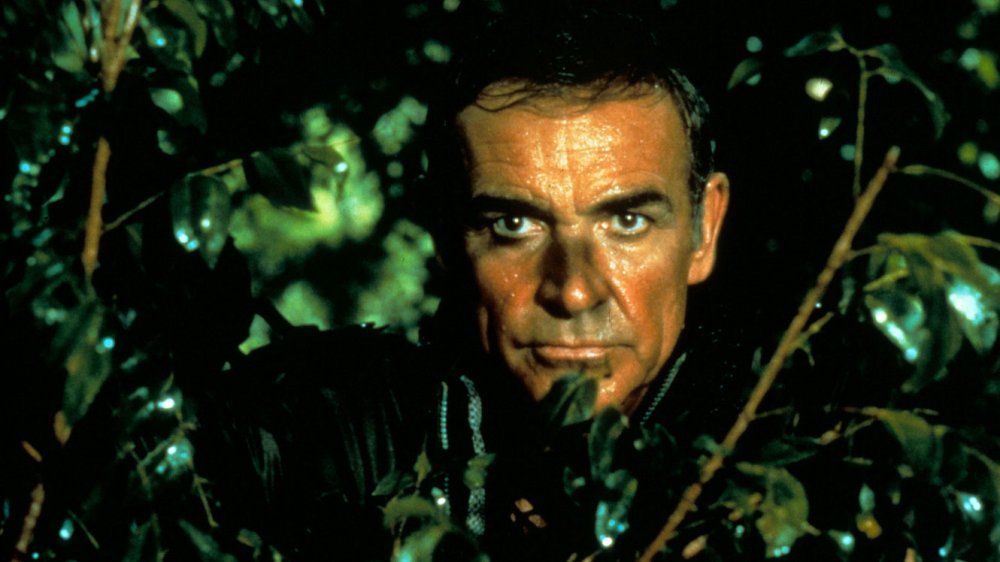The Real Reason 1983 Had Two New James Bond Movies In The Same Year
Not many movie characters have a longer history than James Bond, the MI6 agent with the license to kill who first graced the silver screen in Dr. No all the way back in 1962. No fewer than six actors have played 007 in feature films, and while current Bond Daniel Craig (who has held down the role since Casino Royale in 2006) has acquitted himself splendidly in the role, and past Bonds like Timothy Dalton and Pierce Brosnan have their places in the hearts of fans, many will still argue that there's never been a better Bond than the original.
Sean Connery portrayed the super spy in five classic films between 1962 and 1967, and after a brief hiatus (during which he was replaced by George Lazenby for 1969's On Her Majesty's Secret Service), he returned to the role for 1971's Diamonds Are Forever. Connery then seemingly hung up his tux for good, famously stating that very year that he would "never again" return to the role that made him an international superstar.
Roger Moore became the new Bond with 1973's Live and Let Die, and his seven-film tenure produced some of the series' most memorable and successful pictures, such as 1977's The Spy Who Loved Me and 1981's For Your Eyes Only. But then, in 1983, an unprecedented development: Just a few months after the release of Octopussy, Moore's sixth turn as bond, there came Never Say Never Again, a competing Bond film from a different production company. Its very title advertised its greatest asset: the return of Connery, after 12 years, to his signature role. How could this happen? It's a strange story, the roots of which can be found in the production of — and legal battle over — the novel that was adapted into the fourth Bond film, 1965's Thunderball.
The legal dispute over Thunderball
As documented by the Bond fansite Universal Exports, the battle over Thunderball was an extremely complicated one which raged in some form or another for decades. It began in the late '50s, when Ian Fleming — the author of the James Bond novels, which at the time numbered seven — enlisted screenwriter Kevin McClory to help him bring his creation to the screen. They were soon joined by scribe Jack Whittingham, and together, the three produced the original screenplay for Thunderball, which included some key elements — the evil terrorist organization SPECTRE, its supervillain-like leader Ernst Stavro Blofeld, and his underwater lair — which were conceived by McClory, and which would become vital parts of the Bond mythology.
Once the script was completed, Fleming made an inexplicable blunder: he wrote a novelization based on it without crediting McClory or Whittingham. Thunderball, the novel, was published in 1961, prompting an immediate lawsuit by the screenwriters. The suit was decided in 1963, and in addition to future publications of the novel properly crediting the pair, Fleming was compelled to sell the film rights to the novel to McClory alone.
Despite all of that wrangling, Eon Productions — which had in the meantime produced the features Dr. No, From Russia With Love, and Goldfinger based on Fleming's works — were keen to adapt Thunderball to the screen. McClory's own film production company granted Eon a license to make the movie, with the stipulation that the rights to the material would revert back to McClory after ten years. Thunderball, the movie, was released in 1965 — and exactly ten years later, McClory began making noise about using his recently reacquired rights to produce his own feature based on his original script, without the involvement of Eon, which was originally to be titled James Bond of the Secret Service.
A tale of two Bonds
McClory finally got that ball rolling in the early '80s. Almost serendipitously, it was at a point when Roger Moore was ready to walk away from the role. Following 1981's For Your Eyes Only, Moore had publicly proclaimed that he was ready to quit, sending the franchise's producers on the hunt for the next actor to take on the role in Octopussy, their next planned production. Interestingly, this led to the only time that an American actor ever came significantly close to playing Bond. James Brolin, who had recently scored major hits with Capricorn One and The Amityville Horror, auditioned for the role and actually won it. Yes, that would be the father of Josh Brolin, who portrayed Thanos in the Marvel Cinematic Universe, and grandfather to Yellowstone's Eden Brolin. Hollywood can be a pretty dynastic place.
Eon, however, caught wind of McClory's rival production and were alarmed by the news that he had somehow talked Sean Connery, whose shadow still loomed large over the Bond franchise, into returning (via ScreenRant). As it became apparent that the two productions were on a collision course, Eon decided that it was probably not the right time to re-cast Bond, knowing full well that Connery's presence alone could potentially give McClory's one-off picture an edge over its established brand. Moore was convinced to continue playing Bond on a film-by-film basis, an arrangement which didn't last very long. After Octopussy, Moore would only portray 007 one more time, in 1985's A View to a Kill.
Sean Connery's return gave the main series some stiff competition
Octopussy was released in June 1983, and while some of its elements haven't aged particularly well (it's the film in which Bond finds himself wearing both a gorilla suit and a full-on clown outfit at different points), it was a commercial success. The flick's producers were fortunate, though, to have beaten Never Say Never Again to the box office by several months, because when that film was released in October, it was quickly lauded as the superior of the two movies. While Octopussy was blasted for being a formulaic entry guilty of reducing Bond to a punchline, Never Say Never Again was praised for its more understated approach, and for the performance of Connery, whose then-wife Micheline conceived the film's title based on her husband's famous statement regarding his signature role.
For casual Bond fans, having two flicks with two different Bonds debut in the same year might have seemed like overkill, but for those who had had trouble accepting anybody but Connery in the role, Never Say Never Again was the kind of pop culture gift that is too seldom received. In his three-and-a-half star review of the picture, the great Roger Ebert spoke, with characteristic eloquence, for all of those fans.
"Sean Connery says he'll never make another James Bond movie, and maybe I believe him," Ebert wrote. "But the fact that he made this one, so many years later, is one of those small show-business miracles that never happen. There was never a Beatles reunion. Bob Dylan and Joan Baez don't appear on the same stage anymore. But here, by God, is Sean Connery as Sir James Bond. Good work, 007."



